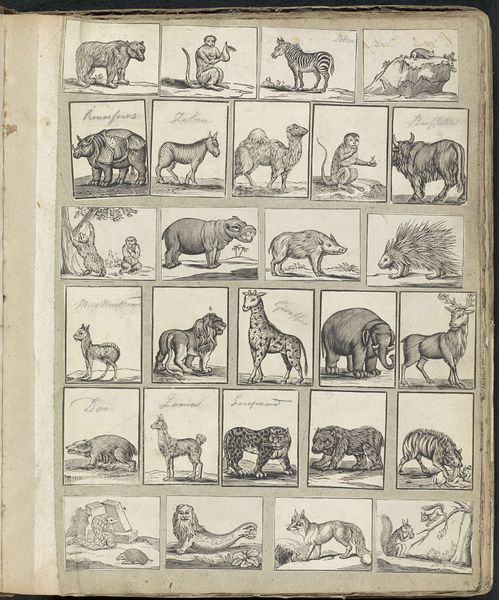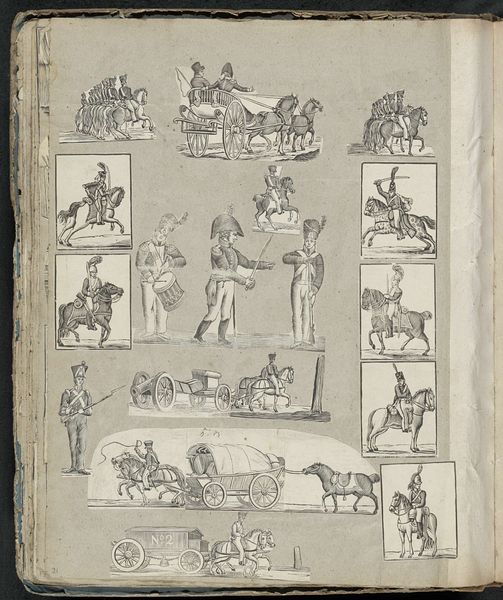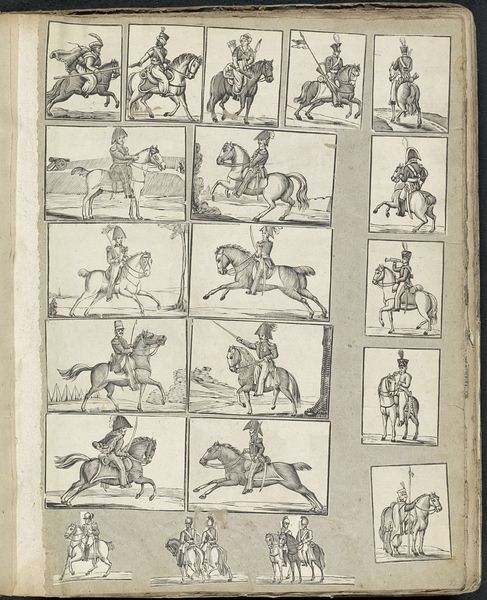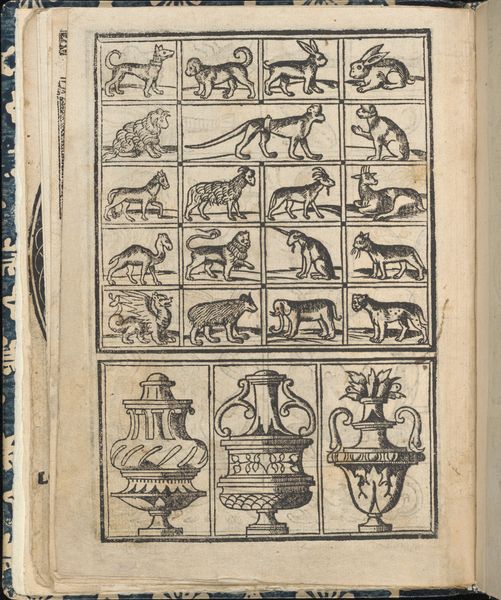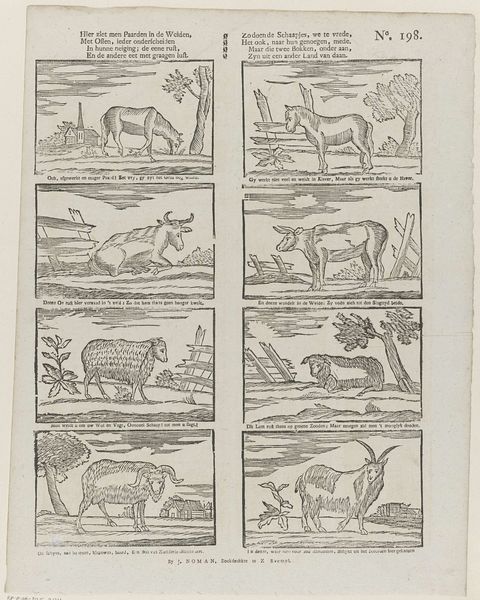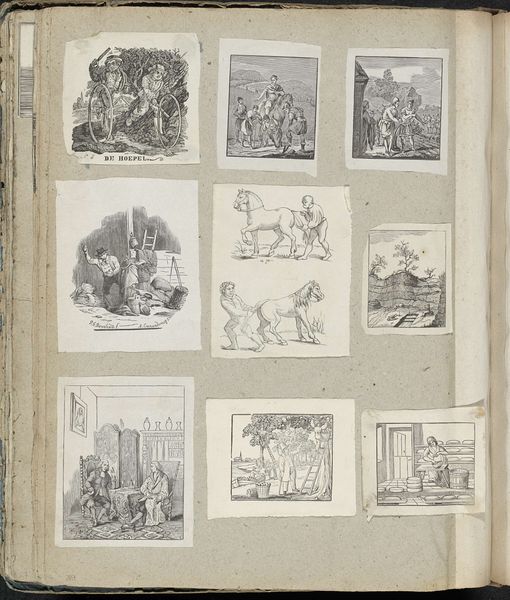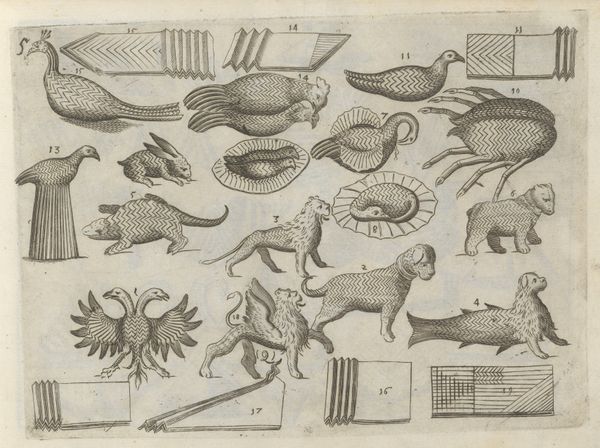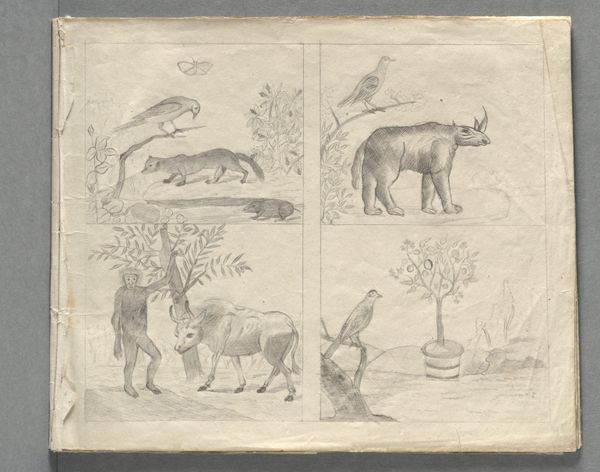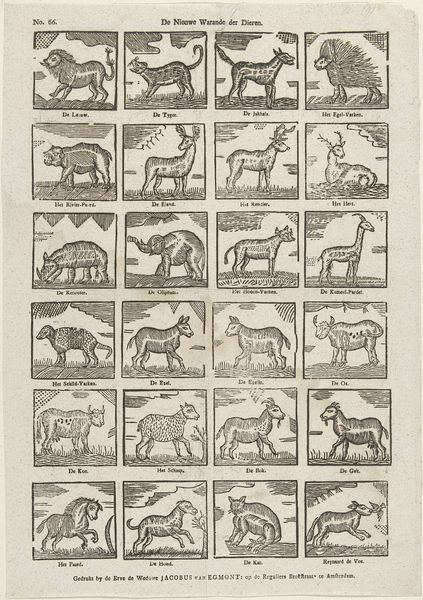
drawing, paper, ink
#
drawing
#
toned paper
#
dog
#
sketch book
#
bird
#
paper
#
personal sketchbook
#
ink
#
pen-ink sketch
#
horse
#
pen work
#
sketchbook drawing
#
watercolour illustration
#
storyboard and sketchbook work
#
academic-art
#
sketchbook art
#
watercolor
Dimensions: height 395 mm, width 331 mm
Copyright: Rijks Museum: Open Domain
Editor: Here we have *Albumblad met diverse voorstellingen*, a collection of drawings in ink and watercolor on paper, made sometime between 1814 and 1869 by Alexander Cranendoncq. The sketchbook page teems with various animals, each meticulously rendered. What strikes me is how each animal seems isolated, almost like specimens. How do you interpret this menagerie? Curator: That sense of isolation is key, isn't it? While seemingly a collection of animals, it invites a deeper probe into 19th-century European society's relationship with the natural world. Consider the era, marked by colonial expansion and scientific classification. Could this be a reflection of how people were categorizing and, in essence, controlling nature? Editor: So, instead of a simple collection, it's more like a visual inventory tied to colonial attitudes? Curator: Precisely. Look at the style. The drawings feel academic, almost clinical. The animals are devoid of much interaction, presented as objects of study. How does that influence our reading of this artwork, knowing the historical backdrop? Editor: It definitely shifts the meaning. The drawings become less about nature's beauty and more about its exploitation for knowledge and resources. Is it fair to see these animals as symbols of the colonized world, then? Curator: It’s a very relevant connection to make, given what was happening during the artist's time. And this brings forth the urgent dialogue we need to keep alive around how we situate living beings, and the responsibilities we need to have. Editor: This was very helpful. It's incredible how a simple-seeming sketchbook page can open up a whole discussion on colonialism and control. Curator: Indeed. Art often holds up a mirror to society, reflecting its values and power structures, inviting us to question the status quo.
Comments
No comments
Be the first to comment and join the conversation on the ultimate creative platform.
